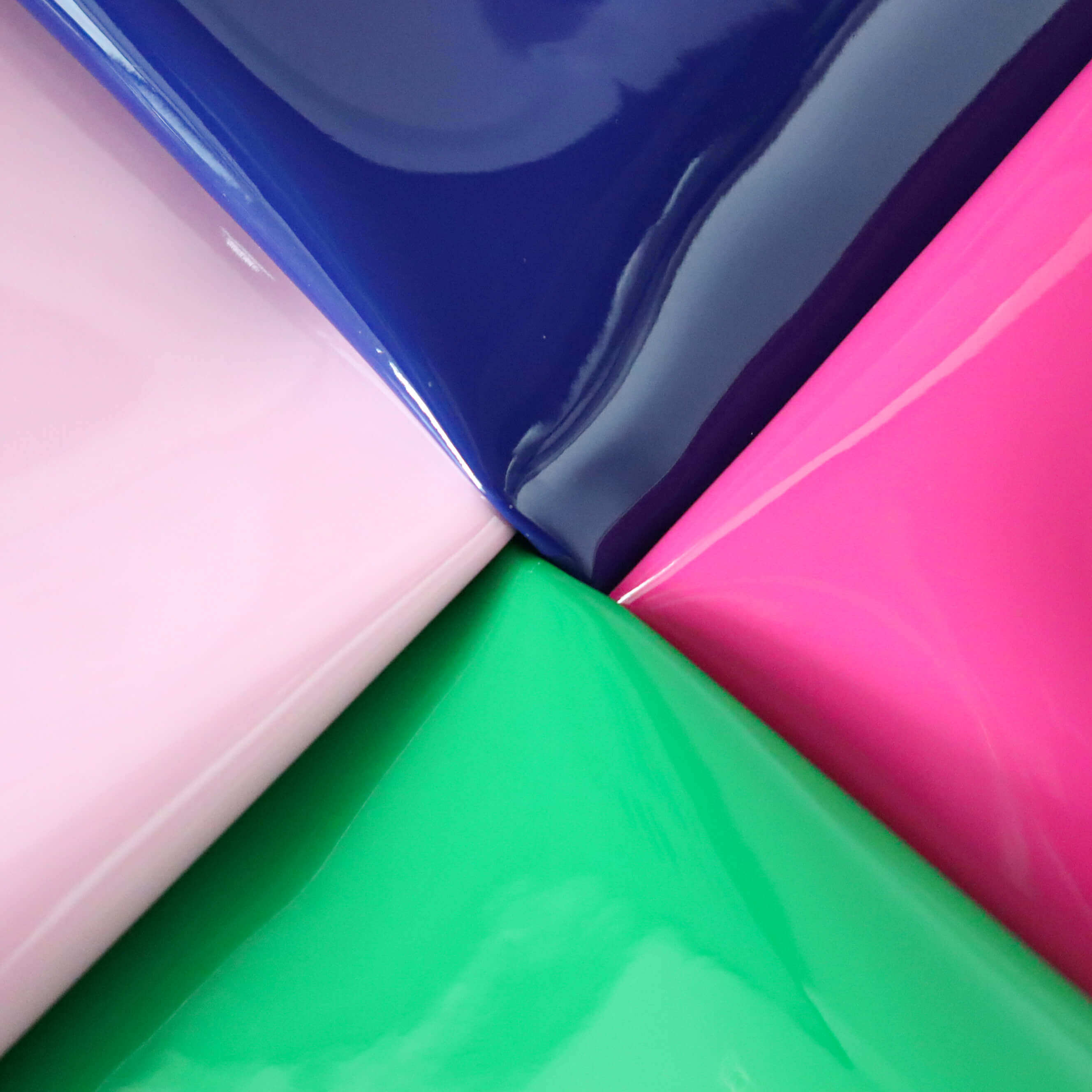Email format error
Email cannot be empty
Email already exists
6-20 characters(letters plus numbers only)
The password is inconsistent
Email format error
Email cannot be empty
Email does not exist
6-20 characters(letters plus numbers only)
The password is inconsistent

News

Exploring the World of PU Artificial Leather: A Comprehensive Guide
Polyurethane (PU) artificial leather has become a popular alternative to genuine leather in various industries. Its versatility, durability, and affordability make it a preferred choice for many manufacturers and consumers alike. In this blog post, we will delve into the fascinating world of PU artificial leather, exploring its benefits, applications, and how it compares to other synthetic leathers like PVC. Whether you are a manufacturer, a designer, or simply a curious consumer, this comprehensive guide will provide you with valuable insights into PU artificial leather.
What is PU Artificial Leather?
PU artificial leather, also known as polyurethane leather, is a type of synthetic leather made from thermoplastic polymer. Unlike genuine leather, which is derived from animal hides, PU leather is entirely synthetic, making it a more ethical and sustainable option. PU leather is produced by coating a fabric base, typically made of polyester or cotton, with a flexible polyurethane layer. This process gives PU leather its distinctive look and feel, closely mimicking the appearance and texture of genuine leather.
The Manufacturing Process of PU Artificial Leather
The manufacturing process of PU artificial leather involves several key steps:
Base Fabric Preparation: The first step in producing PU leather is preparing the base fabric. Polyester or cotton fabric is typically used as the base material due to its durability and flexibility.
Coating with Polyurethane: The base fabric is then coated with a layer of polyurethane. This coating can be applied using various techniques, such as knife coating, roller coating, or transfer coating. The thickness of the PU layer can be adjusted to achieve different textures and finishes.
Embossing and Texturing: To give PU leather its realistic leather-like appearance, the coated fabric is often embossed or textured. This process involves pressing the material with patterned rollers or plates to create the desired grain or texture.
Finishing: The final step in the manufacturing process is finishing. This involves adding protective coatings, dyes, or pigments to enhance the durability, color, and overall appearance of the PU leather.
Benefits of PU Artificial Leather
PU artificial leather offers numerous benefits that make it a popular choice in various industries:
1. Ethical and Sustainable
One of the most significant advantages of PU leather is its ethical and sustainable nature. Since it is made from synthetic materials, no animals are harmed in the production process. Additionally, PU leather can be produced using eco-friendly methods, reducing its environmental impact.
2. Versatile and Customizable
PU leather is highly versatile and can be easily customized to meet specific requirements. It can be produced in various colors, textures, and finishes, making it suitable for a wide range of applications, from fashion and furniture to automotive interiors and accessories.
3. Durable and Easy to Maintain
PU leather is known for its durability and resistance to wear and tear. It is less prone to cracking, peeling, and fading compared to genuine leather. Additionally, PU leather is easy to clean and maintain, requiring only a damp cloth for regular upkeep.
4. Affordable
Compared to genuine leather, PU artificial leather is more affordable, making it an attractive option for budget-conscious consumers and manufacturers. Its cost-effectiveness does not compromise its quality, making it a valuable alternative to traditional leather.
Applications of PU Artificial Leather
The versatility and durability of PU artificial leather make it suitable for a wide range of applications:
1. Fashion and Apparel
PU leather is widely used in the fashion industry to create stylish and affordable clothing, footwear, and accessories. From jackets and skirts to handbags and belts, PU leather offers a cruelty-free and fashionable alternative to genuine leather.
2. Furniture and Upholstery
PU artificial leather is a popular choice for furniture and upholstery due to its durability and ease of maintenance. It is commonly used for sofas, chairs, and car seats, providing a luxurious and long-lasting finish.
3. Automotive Interiors
The automotive industry extensively uses PU leather for car interiors, including seats, dashboards, and door panels. Its resistance to wear and tear, combined with its customizable appearance, makes it an ideal material for enhancing the aesthetics and comfort of vehicles.
4. Accessories and Lifestyle Products
PU leather is also used to create various accessories and lifestyle products, such as wallets, phone cases, and book covers. Its affordability and versatility make it a popular choice for a wide range of consumer goods.
Comparing PVC Leather vs PU Leather
When discussing synthetic leathers, it is essential to address the differences between PU leather and PVC leather. While both materials are popular alternatives to genuine leather, they have distinct characteristics and applications.
1. Composition
PU leather is made from polyurethane, while PVC leather is made from polyvinyl chloride. The base materials and production processes for these two types of synthetic leather are different, resulting in varying properties and uses.
2. Environmental Impact
PU leather is generally considered more environmentally friendly than PVC leather. The production of PVC involves the use of harmful chemicals and has a higher environmental impact. In contrast, PU leather can be produced using more eco-friendly methods, making it a more sustainable option.
3. Breathability and Comfort
PU leather is more breathable and flexible compared to PVC leather, making it more comfortable for applications such as clothing and footwear. PVC leather tends to be stiffer and less breathable, which can affect its comfort and usability.
4. Durability
Both PU and PVC leather are durable, but PU leather is generally more resistant to cracking and peeling over time. PVC leather, on the other hand, is known for its excellent water resistance and is often used for applications requiring high levels of moisture protection.
One common question among consumers is whether PU leather is suitable for shoes. The answer is yes, PU leather is an excellent material for footwear. Here are some reasons why:
1. Durability
PU leather is highly durable and can withstand regular wear and tear, making it a suitable material for shoes. It is less prone to cracking and peeling, ensuring that your shoes maintain their appearance and functionality over time.
2. Comfort
PU leather is more breathable and flexible than other synthetic leathers, providing a comfortable fit for shoes. Its flexibility allows for better movement and reduces the risk of blisters and discomfort.
3. Style and Variety
PU leather can be produced in various colors, textures, and finishes, offering a wide range of styles for footwear. Whether you prefer classic designs or trendy looks, PU leather can cater to different fashion preferences.
4. Affordability
PU leather shoes are generally more affordable than genuine leather shoes, making them accessible to a broader audience. Despite their lower cost, PU leather shoes do not compromise on quality and style.
The Future of PU Artificial Leather
As the demand for ethical and sustainable materials continues to grow, the future of PU artificial leather looks promising. Advances in technology and manufacturing processes are expected to further improve the quality, durability, and environmental impact of PU leather. Additionally, the fashion and automotive industries are increasingly adopting PU leather as a viable alternative to genuine leather, driving innovation and growth in this sector.
Conclusion
PU artificial leather is a versatile, durable, and affordable alternative to genuine leather, offering numerous benefits for various applications. Its ethical and sustainable nature, combined with its customizable appearance and ease of maintenance, make it a preferred choice for many manufacturers and consumers. Whether you are considering PU leather for fashion, furniture, or automotive interiors, this comprehensive guide provides valuable insights into its advantages and applications. As the industry continues to evolve, PU artificial leather is set to play a significant role in shaping the future of sustainable and cruelty-free materials.

